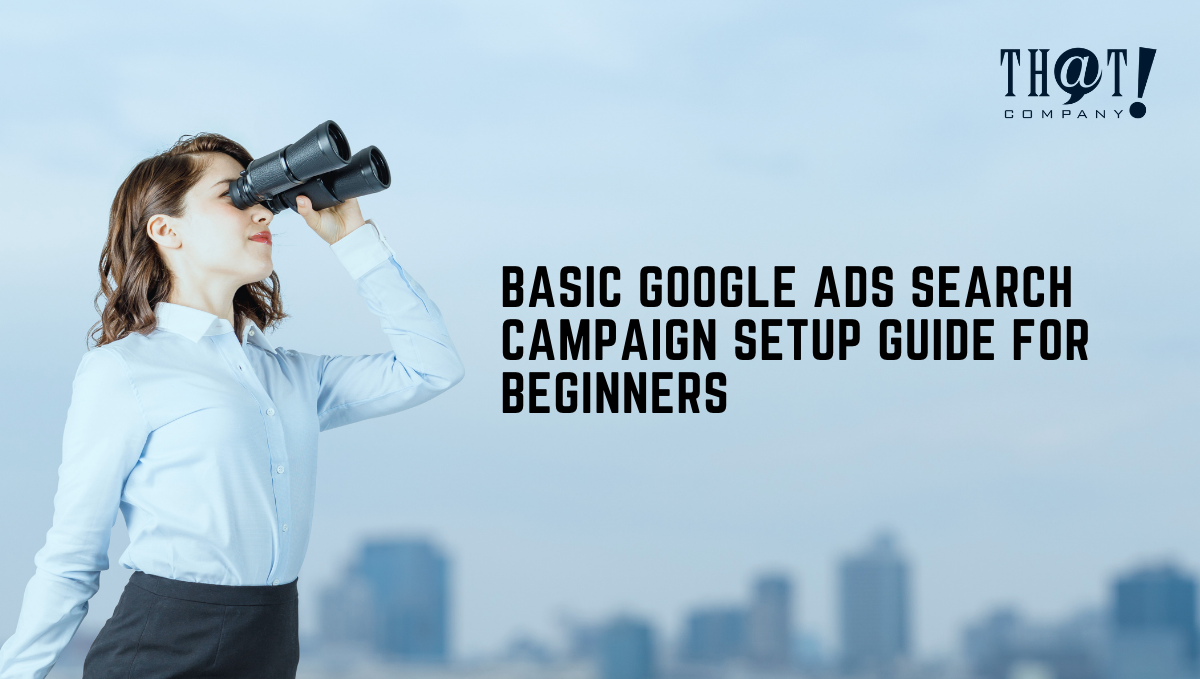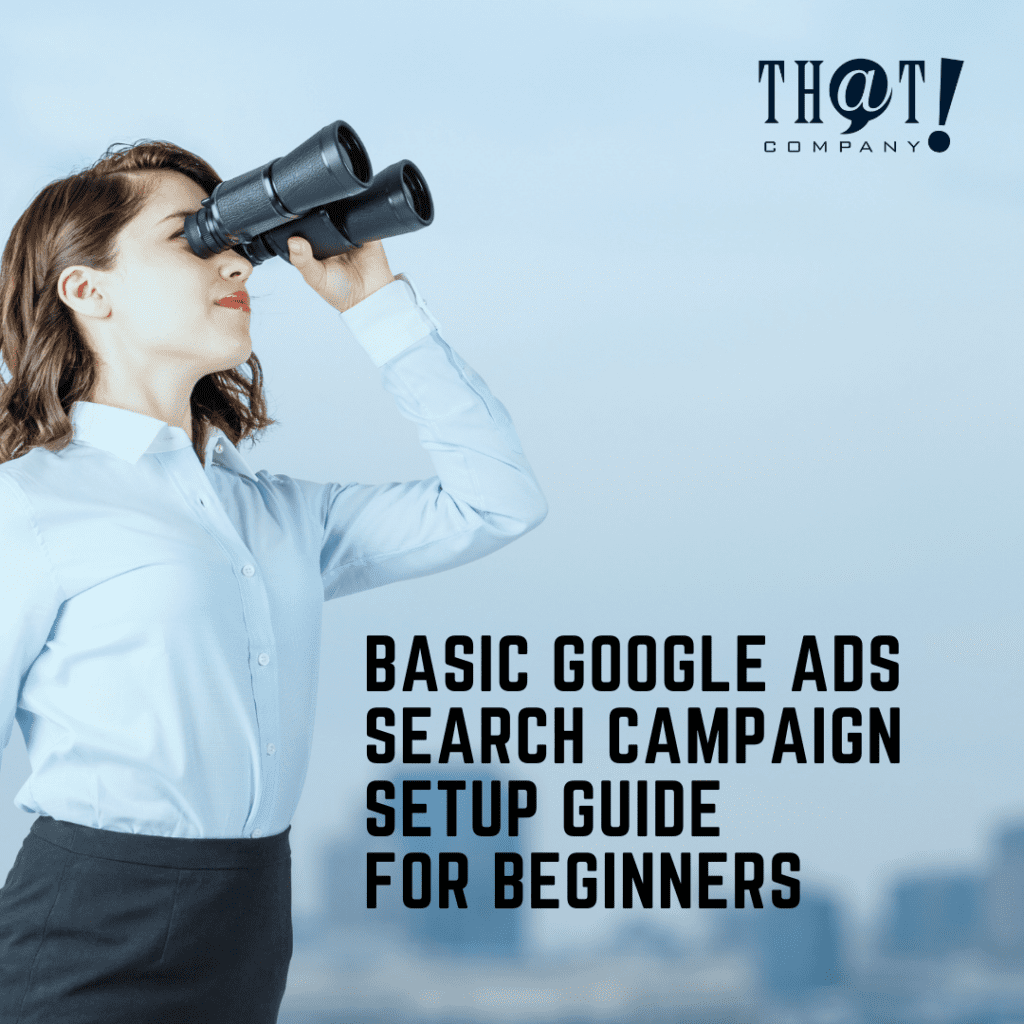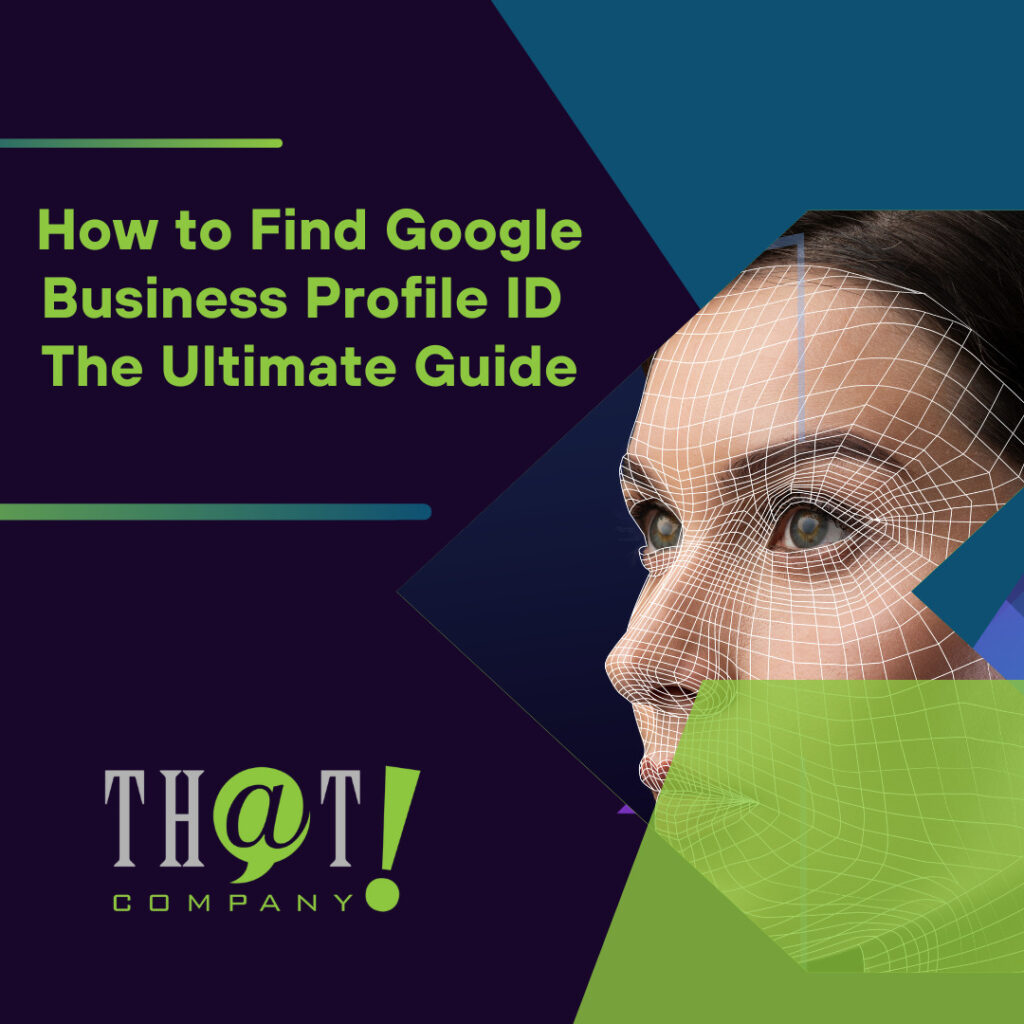
If you are a beginner who will create a new Google Ads Search Campaign Setup, there will be mixed emotions of excitement, anxiety, fear, and hope that come to mind when clicking the new button.
Being a beginner in the industry, you might get afraid of messing it up. Yes, I feel you because I have been there. With that, I will walk you through a step-by-step process in creating a successful
PPC Google Ads campaign for the first time.
So, let us discuss it. Read until the end and follow the steps as I walk you through a basic setup and successful Google Ads search campaigns.
Search Campaign Setup Tips
Know The Business

Before you get excited about creating your new search campaigns, you need to verify and confirm the business.
Here are some of the basic questions you must answer in knowing the business:
- What is the client’s website?
- What are the services/products they provide?
- What is their target location?
- Who are their target customers?
By answering those questions, you will create a draft in your mind of how your first campaign will look like.
Creating Initial Keyword List
Creating keywords is so crucial. It takes time, effort, and focus. But this step is the foundation and the most important thing to do to help the business grow in creating a successful search campaign.
Here are some of the areas that will help you find your keywords list:
- Clients Website – This is by targeting a specific product or service the client offers. Be sure to include the keywords that will make it more ETM (entering the market) and will allow customers to directly looking for something the client is offering.
- Put your shoe on a customer point of view – This is the basic yet the most helpful tip in creating a keyword list. This is when, if you are looking for something (specifically the product/services of the client), what would you enter in the Google search bar?
- Keywords Research Tools – There are different tools that you can use in doing keyword research. But, as a beginner, you can use the built-in keyword research tool in Google Ads which is the keyword planner. With the help of the keyword research tools, you will be able to know the keyword trends and relevant search terms to your keyword seed list.
Doing keyword research is an ongoing process. But starting your strong initial keyword seed list will start you on a path of a successful Google Ads search campaign.
[bctt tweet=”A proper organization will give a good impact on your quality score and will influence how your account will perform.” username=” ThatCompanycom”]
Campaign Structure & Tight Ad Grouping

A proper organization will give a good impact on your quality score and will influence how your account will perform.
Your campaign should be segmented into higher-level ideas so that you can create a tight grouping based on your selected keywords. Here are the following to consider in segmenting your campaign:
- It should be based on the products and services that the client offers.
- It should be based on the geographical location that the client wants to target.
- It should be based on the brand names/brand keywords vs. the generic names / generic keywords.
In structuring your campaign, the best guideline to follow is to ensure that your ad groups are related to your campaign. And, of course, an ad group should be composed of your related keywords.
Create Ad Copy & Mapping Landing Pages
This step is the final consideration before jumping into campaign settings. It is writing compelling ads and mapping the right landing pages per ad group. Having the best campaign name with its tight grouping can fall flat without having a compelling ad and a proper landing page experience.
Before you dive into creating your ad copies, take a step back and think of the customer/audience you want to appeal to. You must put in your mind that you have to create ads that are present on the client’s website. So here are some of the tips to have a compelling ad copy.
- Look for Clients’ Trust and Benefits –Check on the client’s social media or website and look for the website’s trust and benefits. Found out how does the client is unique from its competitors. This is by making sure that the product and services the client provides will reflect the ad copy and any brand advantages.
- Use the main keywords. –In creating an ad copy, make sure that your main keyword in the specific ad group is present in the ads. Most especially, see to it that the main keyword is present on the landing page because this mirrors the searcher’s query.
- Create a Goal. –Know the action that you want the customers to take on the landing page. Never forget to put a call to action on your ad copies. Examples are Buy Now. Contact Us. Call Us Today. Sign Up Now and more.
There are different ways in creating an ad. Either in Expanded text ad or Responsive search ad. It is up to you if you will do both ads, and just select either one of the types of ads.
Well, here is the difference between the Expanded text ad and the Responsive search ad:
In an Expanded Text Ads or what we call ETAs, you can create three headlines that are up to 30 characters each and two descriptions up to 90 characters each, and a display URL. With ETA, we can allow a higher level of control of what our ad looks like in the search result.
For Responsive Search Ads or what we call RSA, Google will automatically select the best headlines and descriptions based on the sample headlines and descriptions that we provide. With RSA, we are enabled to test a variety of headlines that are cleverly rotated based on the user’s search intent.
As you begin to create your ads, your main goal will be sending the customer on the direct path of conversion. These days, customers do not have enough patience to head back to the search engine until they will reach their desired outcome in one click.
So, at this point, as you are diving into the interface and start creating your first campaign, you already have a list of keywords that are organized into campaigns and ad groups. Each ad group should have 2 to 4 ads that you will prepare and be mapped to landing pages.
Proper Search Campaign Settings

This step is the most crucial step, and this is where you will play with your own strategy in setting up a Google Ads search campaign.
When campaign structure, ad grouping, keyword creation, and ad copies are done, you must check your campaign settings if it is well set. As a beginner here are some of the basic tips for strategizing your campaign setup.
- Networks – Google network will allow you to run on a variety of Google search partners. But the most common setting in a testing phase is the Search Network Only.
- Devices – Use the default settings to show ads on all devices.
- Locations – Of course, target the location depending on the client’s wants. Make sure to target only the people in or regularly in your targeted locations.
- Bid Strategy – This is the most important setting. Google offers manual CPC and automated bidding. But generally, I recommend running initially with a manual bidding strategy, especially to start-up campaigns. This is to manually bid keywords that are receiving good data.
The above steps are just a basic guide for Google ads beginners who are willing to have a successful search campaign. Google AdWords is a powerful tool when it comes to expanding businesses. However, a key to a successful market lies in a good Google Ads expert.
 If you are a beginner who will create a new Google Ads Search Campaign Setup, there will be mixed emotions of excitement, anxiety, fear, and hope that come to mind when clicking the new button.
Being a beginner in the industry, you might get afraid of messing it up. Yes, I feel you because I have been there. With that, I will walk you through a step-by-step process in creating a successful PPC Google Ads campaign for the first time.
So, let us discuss it. Read until the end and follow the steps as I walk you through a basic setup and successful Google Ads search campaigns.
If you are a beginner who will create a new Google Ads Search Campaign Setup, there will be mixed emotions of excitement, anxiety, fear, and hope that come to mind when clicking the new button.
Being a beginner in the industry, you might get afraid of messing it up. Yes, I feel you because I have been there. With that, I will walk you through a step-by-step process in creating a successful PPC Google Ads campaign for the first time.
So, let us discuss it. Read until the end and follow the steps as I walk you through a basic setup and successful Google Ads search campaigns.
 Before you get excited about creating your new search campaigns, you need to verify and confirm the business.
Here are some of the basic questions you must answer in knowing the business:
Before you get excited about creating your new search campaigns, you need to verify and confirm the business.
Here are some of the basic questions you must answer in knowing the business:
 A proper organization will give a good impact on your quality score and will influence how your account will perform.
Your campaign should be segmented into higher-level ideas so that you can create a tight grouping based on your selected keywords. Here are the following to consider in segmenting your campaign:
A proper organization will give a good impact on your quality score and will influence how your account will perform.
Your campaign should be segmented into higher-level ideas so that you can create a tight grouping based on your selected keywords. Here are the following to consider in segmenting your campaign:
 This step is the most crucial step, and this is where you will play with your own strategy in setting up a Google Ads search campaign.
When campaign structure, ad grouping, keyword creation, and ad copies are done, you must check your campaign settings if it is well set. As a beginner here are some of the basic tips for strategizing your campaign setup.
This step is the most crucial step, and this is where you will play with your own strategy in setting up a Google Ads search campaign.
When campaign structure, ad grouping, keyword creation, and ad copies are done, you must check your campaign settings if it is well set. As a beginner here are some of the basic tips for strategizing your campaign setup.






























